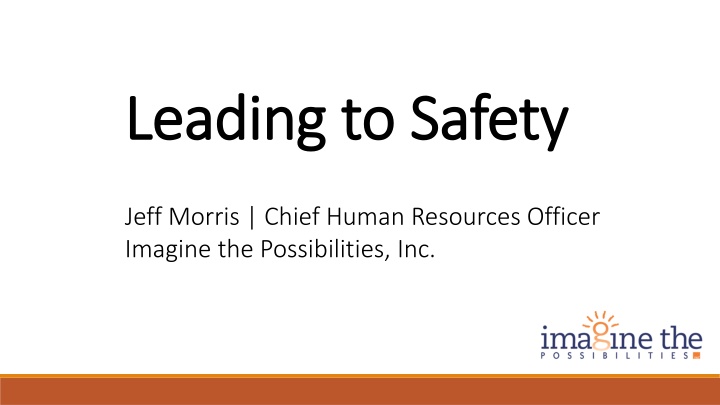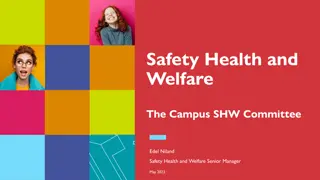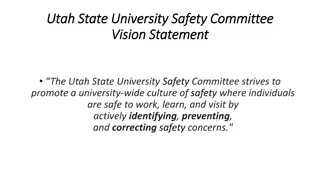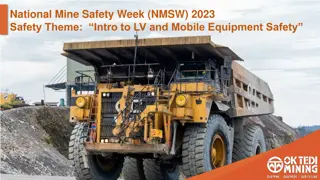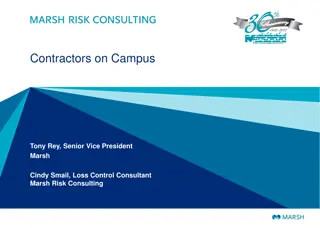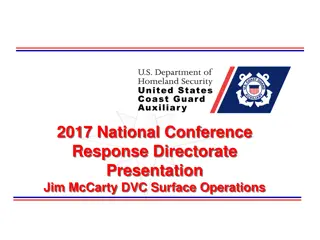Leading to Safety
Examining the crucial link between organizational culture and safety programs, this content emphasizes the importance of fostering a culture of safety within organizations to ensure the success of safety initiatives. It explores the process of changing organizational culture, starting from defining the current culture to setting a desired future state, underlining the role of leadership in driving these changes. The content underscores that culture eats strategy for breakfast, highlighting the significance of prioritizing safety in an organization's mission, vision, and values.
Download Presentation

Please find below an Image/Link to download the presentation.
The content on the website is provided AS IS for your information and personal use only. It may not be sold, licensed, or shared on other websites without obtaining consent from the author.If you encounter any issues during the download, it is possible that the publisher has removed the file from their server.
You are allowed to download the files provided on this website for personal or commercial use, subject to the condition that they are used lawfully. All files are the property of their respective owners.
The content on the website is provided AS IS for your information and personal use only. It may not be sold, licensed, or shared on other websites without obtaining consent from the author.
E N D
Presentation Transcript
Leading to Safety Leading to Safety Jeff Morris | Chief Human Resources Officer Imagine the Possibilities, Inc.
It comes down to culture It comes down to culture After examining the practical and experiential information related to putting a Safety Program together, we re left with an understanding that the program s success will ultimately be determined by the culture of your organization. Do you have a culture of safety?
It comes down to culture It comes down to culture Culture eats strategy for breakfast!
It comes down to culture It comes down to culture Culture eats strategy for breakfast, lunch & dinner!
Changing your organizational culture Changing your organizational culture Changing organizational culture is a process that requires Examination Direction Planning Diligence Leadership
Changing your organizational culture Changing your organizational culture 1.Define the reality of your current culture.
The first responsibility of a leader is to define reality. The last is to say thank you. In between, the leader is a servant. - Max de Pree
Changing your organizational culture Changing your organizational culture 1.Define the reality of your current culture. 2.Determine where you want to go
Mission | Vision | Values Mission | Vision | Values As your organization engages in it s planning process for strategy and values, be sure that SAFETY has an important place at the table.
Changing your organizational culture Changing your organizational culture 1.Define the reality of your current culture. 2.Determine where you want to go. 3.Dedicate yourself to changed behavior.
Changing your organizational culture Changing your organizational culture This will require ongoing and active support Commitment from executive leadership Training, communication & mentoring Be the change! Be the change!
7 Practical Considerations 7 Practical Considerations 1.Establish organizational structures and systems that support a culture committed to safety. 2.Develop and implement effectives policies, procedures and guidelines for consistent action moving forward.
7 Practical Considerations 7 Practical Considerations 3. Allocate necessary resources. 4. Make it a priority in tangible ways. 5. Be visibly involved and committed. 6. Reward people for achievement. 7. Celebrate your successes.
Style Matters Style Matters Leadership styles that work well in leading to safety Servant Leadership Relationship-Based Leadership
The first responsibility of a leader is to define reality. The last is to say thank you. In between, the leader is a servant. - Max de Pree
Effective leaders know that you first have to touch people s hearts before you ask them for a hand The heart comes before the head. - John Maxwell
People wont care how much you know until they know how much you care. - John Maxwell
Why does leadership style matter? Why does leadership style matter? If your employees are working in an environment in which they know they are Uniquely valued Personally understood Genuinely cared for You ve given them a reason to be safe. You ve given them a reason to be safe.
